Flex-A-Seal 78HT Owner's manual

INSTALLATION,
OPERATION &
MAINTENANCE
GUIDE
STYLE 78HT
Headquarters Brazil Gulf Coast Texas
291 Hurricane Lane Rua Javaés, 441/443 1719 South Sonny Avenue Houston
Williston, VT 05495 Bom Retiro, Sao Paulo Gonzales, LA 70737 7545 E. Orem Drive
Brazil CEP 01130-010 Houston, TX 77075
TEL: (832) 804-7424
TEL: (802) 878-8307 TEL: 55-11-3736-7373 TEL: (225) 484-0007
FAX: (802) 878-2479 FAX: 55-11-3736-7355 FAX: (225) 341-8922 Odessa
801 S. Pagewood Avenue
Suite 2, Odessa, TX 79761
TEL: (432) 300-0167
REVISED: September 2022

Installation, Operation, & Maintenance Guide
Style 78HT
OVERVIEW
This guide outlines the installation, operation and maintenance of Flexaseal Style 78HT High Temperature
Dual/Tandem Rotating Welded Metal Bellows Cartridge Seals. This guide, in addition to the manuals provided
by the pump manufacturer and the manufacturer of any auxiliary equipment, should be read in its entirety prior
to installation.
NOTICE
Flexaseal does not assume responsibility for misuse, or any damages incurred as a result of the misuse of the
supplied sealing system. Contact a Flexaseal representative before making any changes to the provided system
or design.
SAFETY
1. Read all instructions thoroughly prior to
beginning installation. Review engineering
prints for special notes and/or instructions.
2. Removal, installation, operation, and
maintenance must only be carried out by
qualified personnel who have thoroughly read
all instructions.
3. The seal must only be used for its intended
application. Flexaseal cannot be held liable for
use outside the scope of the recommended
application.
4. Inspect the replacement seal prior to removal
of the old seal or installation of the new seal
using the technical information provided in this
document. Contact a Flexaseal representative
if there are any questions.
5. Follow plant safety regulations and procedures
throughout the disassembly/installation process
including, but not limited to, the following:
• Lockout/tagout procedures
• SDS consultation for any hazardous
materials involved
• Use of proper personal protective
equipment
• Relief of any system pressure and
mechanical energy
6. The following symbols have been used
throughout the document to highlight important
information:
Instructions intended to prevent damage to
the seal or equipment.
7. Mandatory instructions intended to prevent
personal injury or extensive damage to
equipment.
8. Information to note while installing, or for
later use.
Style 78HT Maximum Operating Conditions
Temperature 800◦F (425◦C)
Pressure
Inboard: 300 psi (20 bar)
Outboard: 250 psi (17 bar)
Differential: 15-25 psi (1-1.7 bar)
Speed 4500 fpm (22 m/s)
• Maximum temperature, pressure, and speed indicate operating extremes independently and
do not imply the seal will function at these extremes at the same time. Contact Flexaseal if in
doubt.
Page 1 of 9

Installation, Operation, & Maintenance Guide
Style 78HT
PREPARATION
• Verify that equipment has been properly
shut off and rendered inoperative according
to plant safety protocol (e.g. lockout/tagout
procedures).
1. Disassemble the pump seal chamber, in
accordance with the pump OEM instructions, to
expose the existing seal.
Document how the seal chamber is
disassembled for re-assembly.
2. Carefully remove the existing sealing device,
taking care not to damage the shaft.
3. Clean the shaft, shaft sleeve (if present), and
seal chamber face of rust, burrs, grit, sharp
edges, and set screw damage using fine emery
cloth. Wipe clean.
Avoid making flat spots or reducing the
shaft diameter.
4. If the pump is equipped with a shaft sleeve,
verify the condition of its O-ring or gasket and
ensure that it is properly located (fully engaged
against step/hook/snap ring).
5. Sealing surfaces and the shaft or shaft sleeve
must have at least a 63 Ra-µin surface finish as
seen in Figure 1.
6. For ease of installation, the leading edge of the
shaft or sleeve should be chamfered as shown
in Figure 1 and all parts should be deburred.
(B) BORE ID
(A) SLEEVE OD
.030 MIN. x 30°
63
63
63
Figure 1: Surface finish and chamfer locations. Fully assembled pump without seal.
Page 2 of 9

Installation, Operation, & Maintenance Guide
Style 78HT
VERIFICATION
Successful operation of a Style 78HT seal is contingent on conforming equipment dimensions and alignment.
Verify the following prior to continuing:
Figure 2: Shaft Runout Figure 3: Bearing Fit Figure 4: Bearing Frame
Perpendicularity
Figure 5: Axial Shaft
Movement
Figure 6: Seal Chamber
Bore Concentricity
Figure 7: Seal Chamber
Face Squareness
Maximum Alignment Variation (TIR)
Fig. 2Radial shaft movement (shaft runout) 0.0015–0.003 in.
Fig. 3Radial bearing fit 0.002–0.003 in.
Fig. 4Bearing frame perpendicularity 0.0005 in./in.
Fig. 5Axial shaft movement (end play) 0.003 in.
Fig. 6Seal chamber bore concentricity 0.005 in.
Fig. 7Seal chamber face squareness 0.0005 in./in.
For proper function and satisfactory operation of the seal it is imperative that connections, dimensions, finishes,
and alignments are all acceptable based on the specified design. If measured values exceed the values given
above, adjust the equipment to meet the specifications before installing the seal. These values are general
guidelines and the pump OEM should be used to verify acceptable values whenever possible.
Page 3 of 9

Installation, Operation, & Maintenance Guide
Style 78HT
SEAL INSTALLATION
Style 78HT High Temperature Dual/Tandem Rotating
Welded Metal Bellows Cartridge Seals require a
similar installation procedure as other Flexaseal
cartridge seals with the addition of a few minor steps.
Ensure alignment verification of equipment has been
completed prior to starting the installation procedure.
Reveiw engineering prints for special notes and/or
instructions.
• It is essential to use a suitable lubricant
when installing a seal, as different
lubricants will work better with different
elastomers.
1. Disassemble the pump until the seal chamber
and shaft are accessible.
2. Remove the seal from its packaging and
inspect for damage to any components and
seal faces.
With the exception of the sleeve packing,
high-temperature cartridge seals are
shipped from Flexaseal fully assembled and
should not be disassembled without cause.
If a seal appears damaged prior to
installation, contact a Flexaseal
representative.
Grease, scratches, or nicks on the seal
faces may cause leakage.
3. Ensure the shaft and seal housing have been
properly cleaned as described in the
preparation section.
4. Remove the drive collar cap screws and collar
from the seal assembly.
The seal will be shipped from Flexaseal
with the drive collar cap screws finger-tight.
5. Lightly lubricate the sleeve packing with a
suitable and compatible lubricant. Slide the
drive collar and the sleeve packing along the
shaft ahead of the seal. Ensure the wedge and
drive collar are oriented properly (Figure 8).
6. Gently slide the seal on the shaft with the gland
gasket facing, but clear of the seal chamber.
7. Reassemble the pump as described by the
pump OEM.
8. Bolt the gland to the seal chamber using the
Legacy Method (Star Pattern) according to
standard torque-tension specifications for bolts
and studs. Be sure not to overtighten the gland
bolts as this may distort the gland and internal
components resulting in seal leakage.
9. Slide the sleeve packing into position under the
outboard edge of the sleeve.
10. Tighten drive collar cap screws evenly to
achieve the specified 0.050 in. gap (Figure 9).
11. Alternately tighten the provided set screws to
the specified torque value according to the
table below.
12. Remove the setting clips from the seal. Save
these for future use in seal removal or impeller
adjustment (Figure 10).
Cup Point Set Screw Torque Specifications
Screw Size Alloy Steel Stainless Screw Size Alloy Steel Stainless
#10 36 in.-lbs. 26 in.-lbs. M4 2.0 N-m 1.5 N-m
1/4 87 in.-lbs. 70 in.-lbs. M6 7.9 N-m 6.1 N-m
5/16 165 in.-lbs. 130 in.-lbs. M8 19.6 N-m 15.4 N-m
3/8 290 in.-lbs. 230 in.-lbs. M10 37.0 N-m 29.5 N-m
1/2 620 in.-lbs. 500 in.-lbs. M12 60.3 N-m 48.3 N-m
Page 4 of 9

Installation, Operation, & Maintenance Guide
Style 78HT
Figure 8: Step 5.Figure 9: Step 10.Figure 10: Step 12.
.050
DESIGN GAP
Figure 11: Style 78HT layout.
SEAL SUPPORT SYSTEM INSTALLATION
The following steps briefly describe the methods in which a buffer/barrier system should be piped and set up to
support a double cartridge seal. Consult Flexaseal for specific applications and details.
1. Correctly make connections between the buffer/barrier fluid system and the mechanical seal according to
the connection labels on the prints. In the case of a Piping Plan 52 or Plan 53A the SEAL SUPPLY
connection (lower port) on the reservoir must lead to the buffer/barrier fluid in (BFI) connection on the seal
gland; the SEAL RETURN connection (upper port) on the reservoir must lead to the buffer/barrier fluid out
(BFO) connection on the seal gland (Figure 12).
• Piping should slope continuously upwards (1⁄2in./ft. [40 mm/m] minimum) with no relative high points
that would result in trapped air in the tubing.
• For shafts smaller than 2 1⁄2in. [64 mm] use at least 1⁄2in. diameter tubing and at least 3⁄4in. tubing for
larger shafts.
• Use smooth, long radius bends in the piping, minimize 90◦elbows, and use 45◦bends wherever
possible.
Page 5 of 9

Installation, Operation, & Maintenance Guide
Style 78HT
Use thread sealant instead of thread tape. Thread tape has been known to break apart and
enter the buffer/barrier fluid stream, resulting in damage to and premature failure of the
mechanical seal.
Ensure that all tubing/piping is free of pipe strain, which can adversely affect the seal.
2. Flood the seal support system with the recommended buffer/barrier fluid and ensure all air is properly
vented from the seal.
3. Check for seal leakage.
Figure 12: Typical installation of a buffer/barrier fluid reservoir.
Page 6 of 9

Installation, Operation, & Maintenance Guide
Style 78HT
BEFORE STARTING THE EQUIPMENT
1. Ensure the pump shaft is properly aligned at
the coupling with the motor.
2. Check that all gland plate bolts and all screws
are securely fastened.
3. Once the pump is reassembled, turn the shaft
by hand if possible to check for free rotation, if
not, recheck installation.
4. Verify that all plumbing and piping plans for the
seal are connected and configured according
to best practice.
5. Flood the pump, vent all air from the seal
chamber, and again check seal for leakage.
Ensure the product is not leaking into the seal
support system by noting changes in liquid
level and buffer/barrier fluid pressure.
6. Ensure all plumbing and venting for the seal
and seal support system are free of obstruction
and that the chamber is filled with liquid. Check
that all alarms connected to auxiliary systems
are properly functioning to alert personnel if
any issues arise.
Dry-running is a major cause for leakage
and/or failure of mechanical seals. It is
imperative that the seal chamber be
completely vented prior to startup and that
adequate lubrication is supplied to the seal.
7. Start the pump per the pump manufacturer’s
recommendations, observe for proper
operation, and check for excessive heat at the
seal gland.
Check periodically during operation to
ensure that the seal is not overheating.
OPERATION & MAINTENANCE
If leakage is detected, it should be addressed as soon as possible to prevent hazards and protect personnel.
Leakage could come from a number of leak paths in the seal, or be caused by changes in the pump operation or
condition. Although seals should be inspected regularly for signs of leakage, a properly selected and functioning
mechanical seal will run for extended durations without need for extra attention and should not be disturbed
unnecessarily (i.e. shut down and disassembled without cause). Below is an inexhaustive list of possible causes
of leakage.
Primary Causes
• Worn seal faces
• Damaged bellows
• Damaged grafoil packing
Secondary Causes
• Change in duty conditions
• Dry-running
• Worn bearings
• Increased vibration
It is important to periodically inspect and maintain flush systems, shaft alignment, and consistent duty
parameters to ensure the seal performs as designed. Often, there is a case of cause & effect with machinery
and processing issues upstream that can cause a seal to leak. Check for the root cause of leakage when
disassembling equipment for inspection or service.
Buffer/barrier fluids will break down over time or become contaminated with process leakage. Fluids should be
drained from the system as often as possible or during scheduled pump shutdowns. The reservoir and
tubing/piping should be flushed and filled with new, clean buffer/barrier fluid. It is important to clean the seal
support system after a seal failure; the cleaning fluid and procedure required will depend on the contamination in
the reservoir. Never re-use barrier fluid after a seal failure.
Page 7 of 9

Installation, Operation, & Maintenance Guide
Style 78HT
DECOMMISSIONING EQUIPMENT
When decommissioning equipment it is important to ensure that the pump has been fully isolated from the
process and power sources for personnel safety. Pressure and fluid should be fully released before disassembly
of the equipment is to begin.
• If the equipment has been used with toxic or hazardous fluids, ensure that it is
decontaminated and neutralized before decommission begins. There is often residual fluid
remaining from the draining process so consult the pump OEM for special cases.
REMOVING THE SEAL
• Before opening the pump to remove the seal the warning stated above regarding toxins and
hazardous products must be reiterated. Make note of all fluids contained in the pump, drain
and decontaminate before opening the housing for seal service.
1. Ensure all fluid has been drained and vented. Equipment should be shut down and locked/tagged out
according to OEM and plant specifications.
2. Dismantle equipment sufficiently so that the gland plate and seal housing are exposed and accessible for
service.
3. Reset the setting clips that were saved from installation.
4. Back-out the cup point set screws.
5. Evenly back-out and remove the cap screws on the drive collar to relieve the compression on the sleeve
packing.
6. Remove the gland bolts/nuts in an even manner.
7. Carefully slide the seal out and off of the shaft.
8. Carefully slide the sleeve packing and drive collar off of the shaft.
If a part is going to be returned for service or to any third party, all shipments should have
appropriate safe-handling instructions securely attached to the package.
Page 8 of 9

Installation, Operation, & Maintenance Guide
Style 78HT
www.flexaseal.com
Vermont
800.426.3594
Brazil
55.11.3736.737
Louisiana
225.484.0007
Texas
832.804.7424
Flexaseal Engineered Seals and Systems, LLC (hereinafter referred to as "FAS") warrants that new goods manufactured
by FAS (with the exception of "wear parts" or consumables all of which are not warranted) will be free from defects in
material and workmanship (the “Warranty”). The Warranty shall be in effect for a period of the earlier of three (3) months
from the date of installation or six (6) months from the date of shipment from FAS’s facility (which date of shipment shall
not be greater than thirty (30) days after receipt of notice that the goods are ready to ship) (the “Warranty Period”). FAS
shall, at its option and expense, either repair, replace, or refund amounts paid for any goods that fail to conform to the
Warranty. In no case shall FAS be obligated to remove the defective goods or install the replaced or repaired goods, and
the end user shall be responsible for providing ready access to the goods and areas for warranty work, and all other
associated costs, including, but not limited to, service costs, shipping fees, and expenses. FAS shall have complete
discretion as to the method or means of repair or replacement. The end user’s failure to comply with FAS’s repair or
replacement directions shall constitute a waiver of its rights and render all warranties void. Any goods repaired or
replaced under the Warranty are warranted only for the balance of the Warranty Period on the goods that were repaired
or replaced. The Warranty is conditioned on the end user giving written notice to FAS of any goods that fail to meet the
Warranty within ten (10) days of the date when any defects first become apparent. FAS shall have no warranty
obligations to the end user with respect to any goods or parts of a good that: (a) have been repaired by parties other than
FAS or without FAS’s written approval; (b) have been subject to misuse, misapplication, neglect, alteration, accident, or
physical damage; (c) have been used in a manner contrary to FAS’s instructions for installation, operation and
maintenance; (d) have been damaged from ordinary wear and tear, corrosion, or chemical attack; (e) have been
damaged due to abnormal conditions, vibration, failure to properly prime, or operation without flow; (f) have been
damaged due to a defective power supply or improper electrical protection; or (g) have been damaged resulting from the
use of accessory Products not sold by FAS or not approved by FAS in connection with goods supplied by FAS.
THE FOREGOING WARRANTY IS EXCLUSIVE AND IN LIEU OF ANY AND ALL OTHER EXPRESS, ORAL, OR
IMPLIED WARRANTIES, GUARANTEES, CONDITIONS OR TERMS OF WHATEVER NATURE RELATING TO THE
GOODS PROVIDED HEREWITH, INCLUDING WITHOUT LIMITATION, ANY IMPLIED WARRANTIES OF
MERCHANTABILITY AND FITNESS FOR A PARTICULAR PURPOSE, WHICH ARE HEREBY EXPRESSLY
DISCLAIMED AND EXCLUDED. END USER’S EXCLUSIVE REMEDY AND FAS’S AGGREGATE LIABILITY FOR
BREACH OF ANY OF THE FOREGOING WARRANTIES ARE LIMITED TO THE REPAIR, REPLACEMENT, RE-
PERFORMANCE, OR REFUND.
IN NO EVENT SHALL FAS’S LIABILITY ARISING OUT OF OR IN ANY WAY RELATED TO THE GOODS EXCEED
THE AMOUNT PAID BY END USER UNDER THIS AGREEMENT. FAS SHALL HAVE NO LIABILITY FOR LOSS OF
PROFIT, LOSS OF ANTICIPATED SAVINGS OR REVENUE, LOSS OF INCOME, LOSS OF BUSINESS, LOSS OF
PRODUCTION, LOSS OF OPPORTUNITY, LOSS OF USE, LOSS OF REPUTATION, BUSINESS INTERRUPTION,
DOWNTIME, INDIRECT, CONSEQUENTIAL, INCIDENTAL, PUNITIVE OR EXEMPLARY DAMAGES, HOWSOEVER
ARISING, WHETHER IN WARRANTY, CONTRACT, TORT, PRODUCT LIABILITY, STRICT LIABILITY, OR
OTHERWISE, REGARDLESS OF WHETHER FAS HAS BEEN APPRISED OF THE POSSIBILITY OF SUCH LOSSES
IN ADVANCE.
This warranty and limitation of liability shall be governed and construed in accordance with the laws of the State of
Delaware, USA. Sole and exclusive venue for any claim or controversy arising out of or in any way related to this
warranty and limitation of liability shall be in a state court located in Chittenden County, Vermont, USA.
FAS SW
V2.2020
LIMITED WARRANTY AND LIMITATION OF LIABILITY:
SEAL PRODUCTS
Page 9 of 9
Table of contents
Other Flex-A-Seal Industrial Equipment manuals
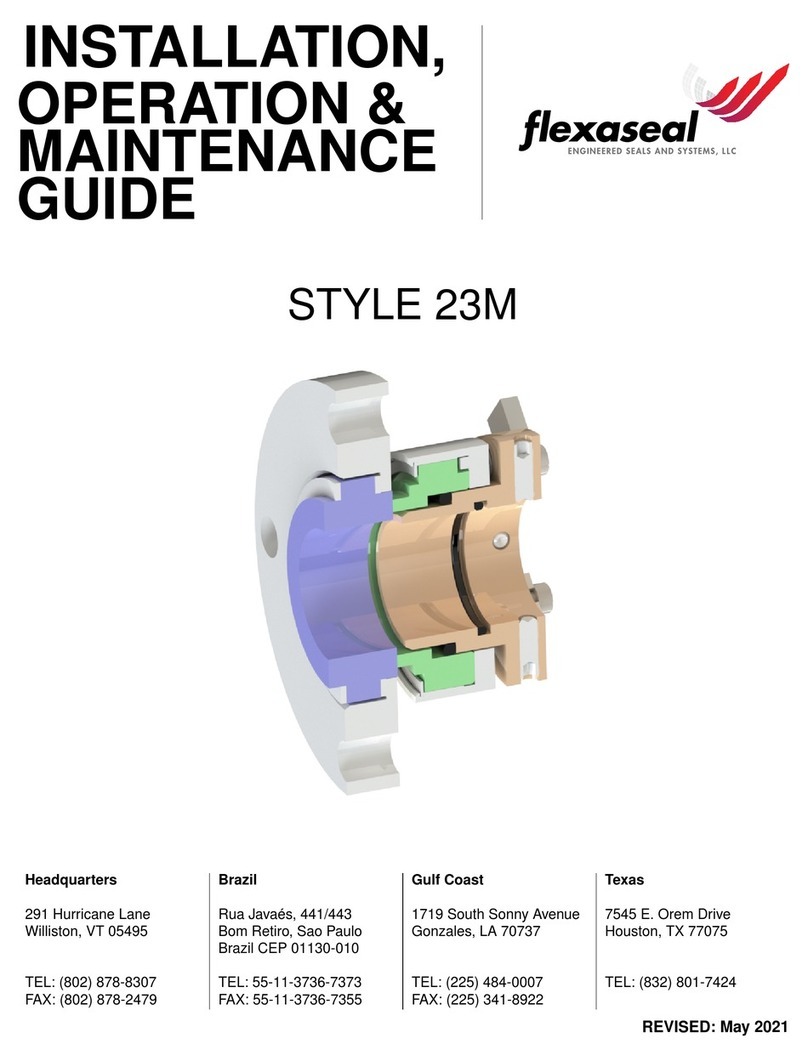
Flex-A-Seal
Flex-A-Seal 23M Owner's manual
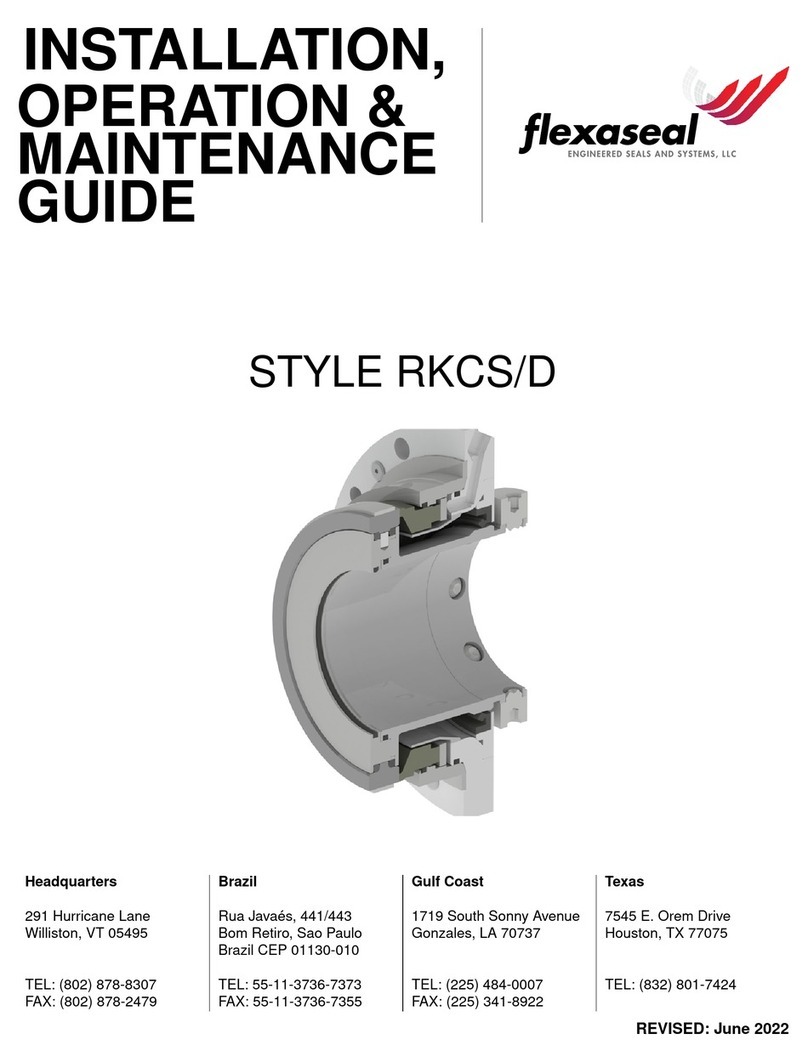
Flex-A-Seal
Flex-A-Seal Style RKCS/D Owner's manual
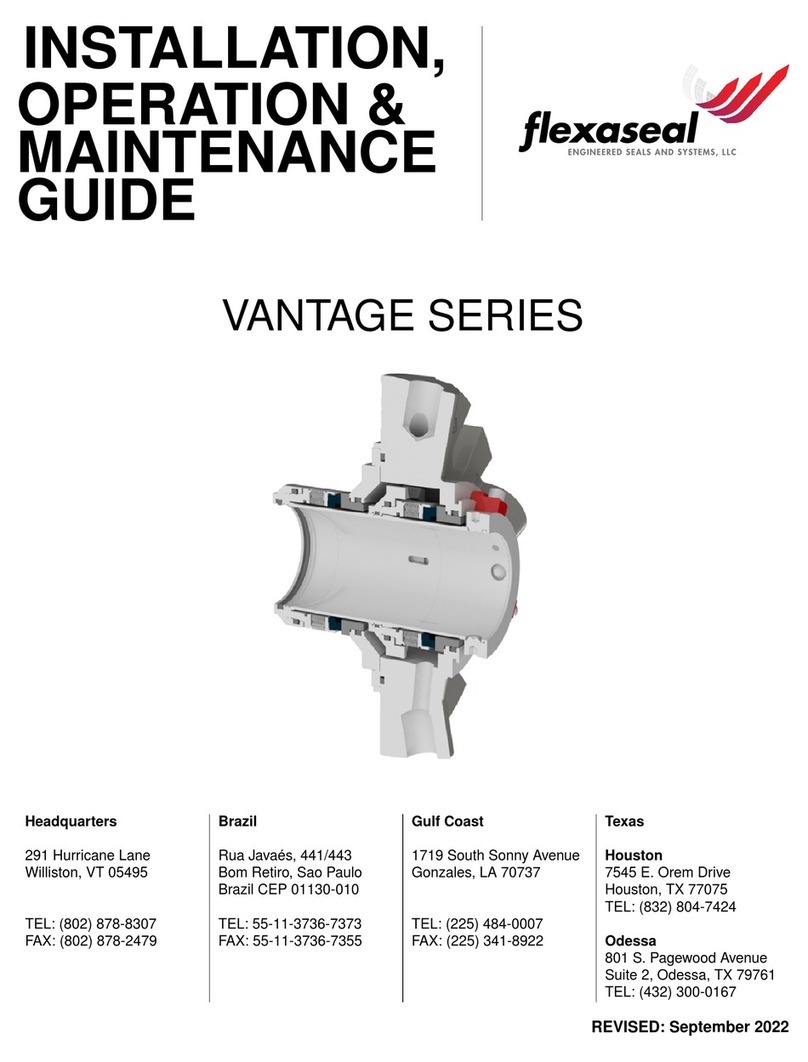
Flex-A-Seal
Flex-A-Seal VANTAGE Series Owner's manual

Flex-A-Seal
Flex-A-Seal 58 Owner's manual

Flex-A-Seal
Flex-A-Seal 73 Owner's manual
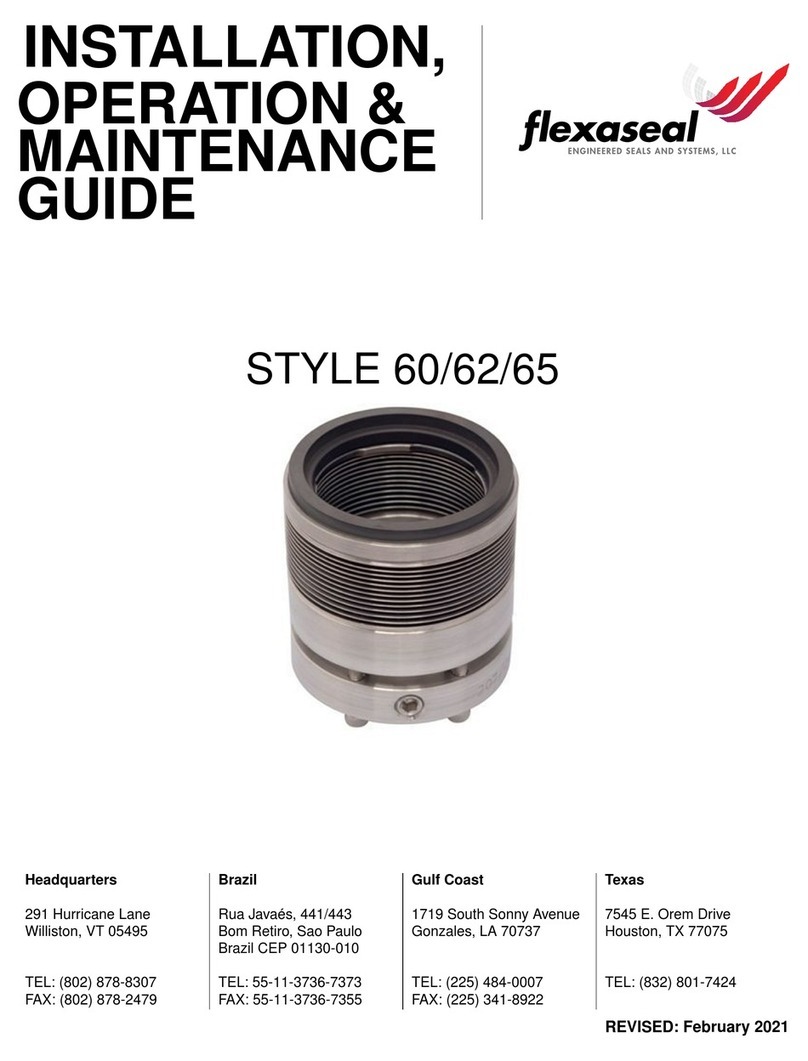
Flex-A-Seal
Flex-A-Seal STYLE 60 Owner's manual
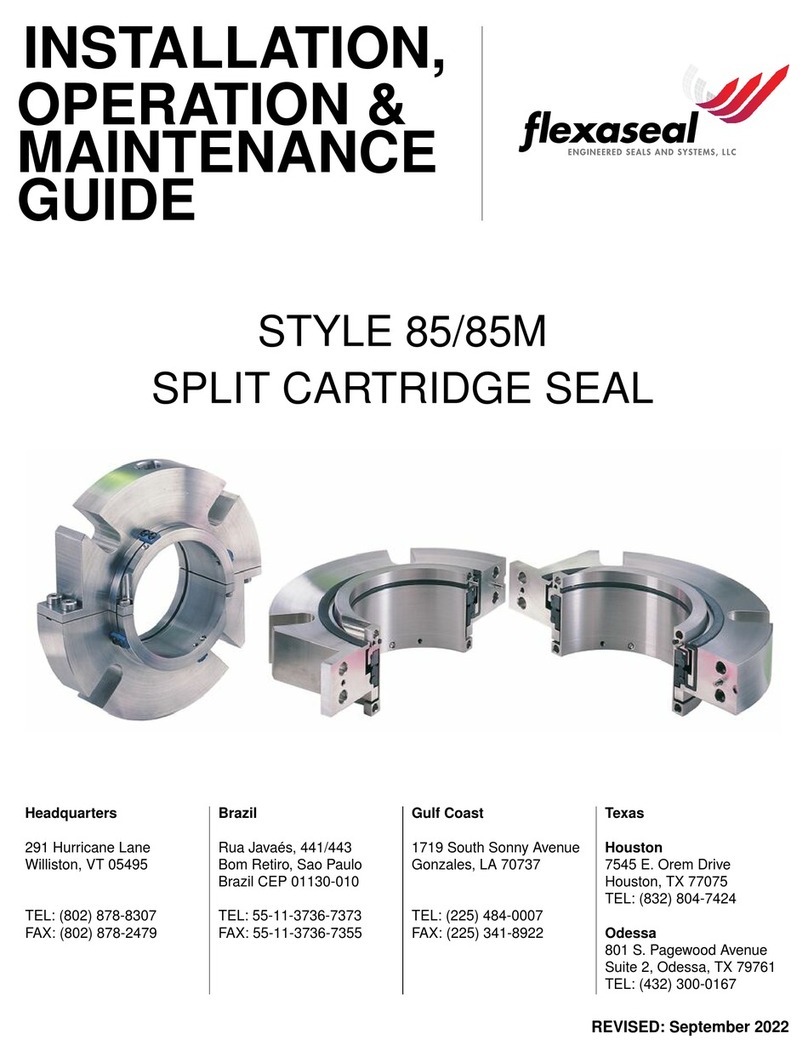
Flex-A-Seal
Flex-A-Seal 85 Owner's manual
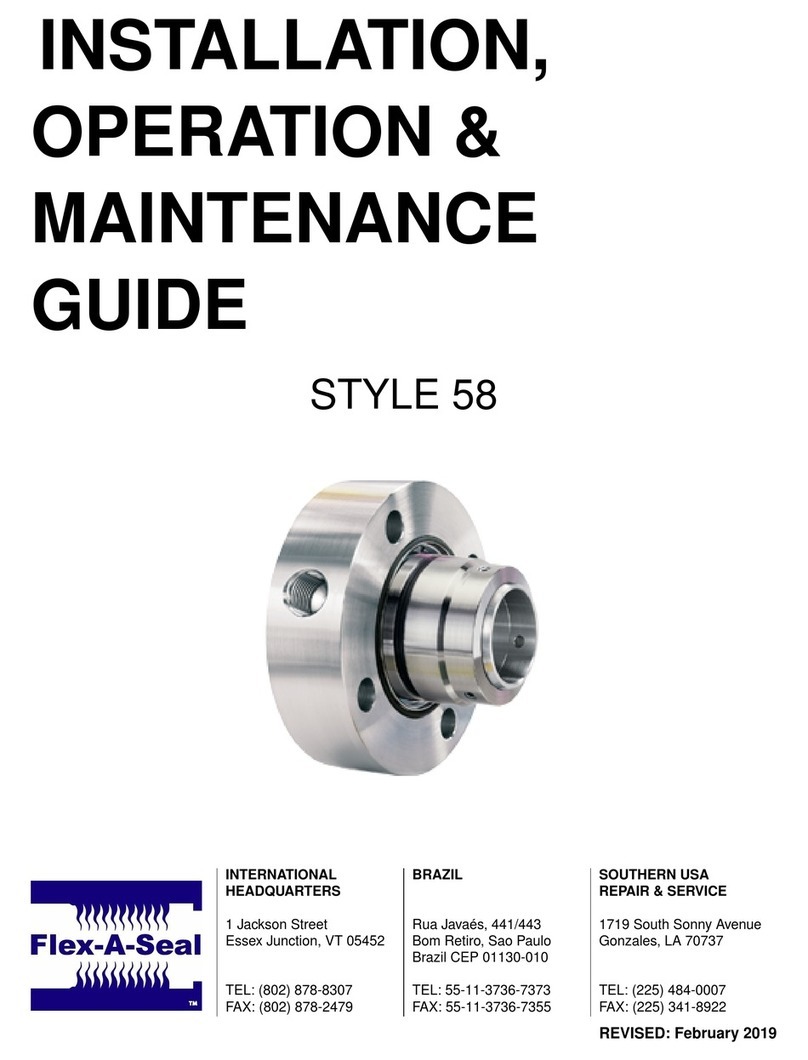
Flex-A-Seal
Flex-A-Seal Style 58 Owner's manual
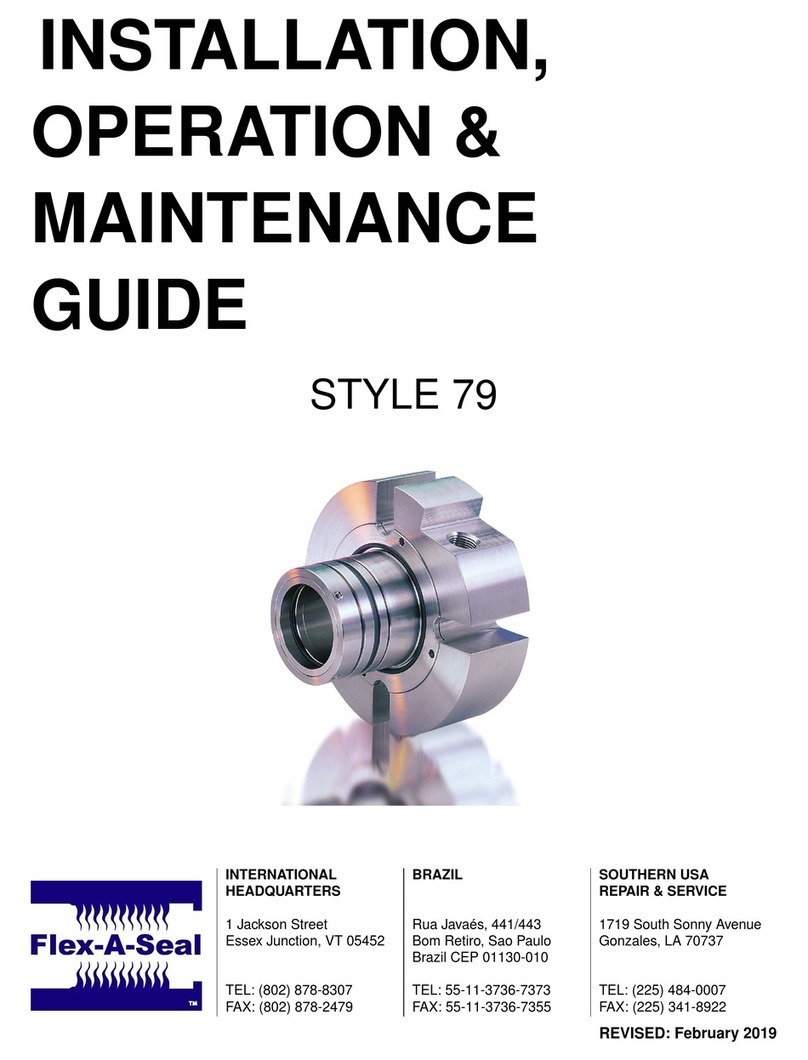
Flex-A-Seal
Flex-A-Seal Style 79 Owner's manual

Flex-A-Seal
Flex-A-Seal 63 Owner's manual

















